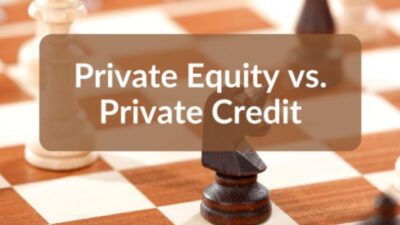Private equity (PE) has long been considered one of the most attractive segments in the alternative investment universe. Its combination of active ownership, operational improvements, and long-term capital horizons has historically delivered robust returns—often surpassing those of traditional public markets. Yet, when assessing its performance, it’s essential to compare it against other asset classes to understand both the potential and the risks.
1. Historical Return Profile
Long-Term Outperformance
Over multi-decade horizons, private equity has generally outperformed public equities, fixed income, and real estate on a net-of-fees basis. According to data from Cambridge Associates and Burgiss, global buyout and growth equity funds launched between 1990 and 2018 have produced net annualized returns (IRRs) in the 12–15% range, compared with 8–10% for public equities (MSCI World or S&P 500) over the same periods.
Example (20-Year Annualized Returns):
| Asset Class | Net Annualized Return | Volatility |
|---|---|---|
| Private Equity (Buyout) | 12–15% | Moderate–High |
| Public Equities (S&P 500) | 8–10% | High |
| Real Estate (Core) | 6–8% | Moderate |
| Fixed Income (US Treasuries) | 2–4% | Low |
The spread in returns—known as the “private equity premium”—is often attributed to illiquidity, active value creation, and the ability to use leverage strategically.
2. Sources of Return Advantage
- Active Ownership and Operational Upside
PE managers engage directly in strategy, cost optimization, and management recruitment, which can create value beyond what passive market exposure delivers. - Access to Inefficient Markets
Private markets are less transparent and more fragmented, offering skilled managers opportunities to acquire assets at attractive valuations. - Leverage
Debt financing amplifies equity returns when portfolio companies perform well—although it also increases downside risk. - Long-Term Focus
Without quarterly earnings pressure, PE-owned companies can execute multi-year growth plans.
3. Volatility and Risk Considerations
Private equity’s reported volatility tends to be lower than public equities, but this is partly an accounting illusion caused by quarterly, appraisal-based valuations instead of daily market pricing. In reality, underlying business risk can be equal or greater than public equities, especially in downturns.
The 2008–2009 financial crisis demonstrated that while PE valuations were slower to adjust, underlying portfolio company fundamentals were not immune to macro shocks. Recovery, however, has historically been strong for top-quartile funds.
4. Comparing to Other Asset Classes
- Versus Public Equities:
PE has historically delivered a 3–5 percentage point premium annually, but the gap narrows in periods when public equity markets are strong and valuations for private assets are high. - Versus Real Estate:
Core real estate offers lower returns and volatility but greater income stability. Opportunistic real estate strategies can approach PE-like returns but with different sector exposures. - Versus Fixed Income:
Bonds provide capital preservation and income but cannot match PE’s growth-oriented returns. However, they play a stabilizing role in a balanced portfolio. - Versus Venture Capital:
VC has greater upside potential but higher dispersion of returns. Top-decile VC funds have outperformed buyouts, but median VC performance is often below buyout funds.
5. Dispersion and Manager Selection
Private equity is not a monolith. The spread between top-quartile and bottom-quartile managers can be 10 percentage points or more per year. Manager selection, sector focus, and vintage year timing have an outsized impact on realized returns—much more than in public equity investing.
6. Illiquidity Premium: Worth the Wait?
Investors in PE commit capital for 8–12 years, enduring illiquidity in exchange for higher expected returns. Academic studies estimate the illiquidity premium at 2–4% annually, depending on market conditions. For investors with long-term horizons—such as pensions, sovereign wealth funds, and endowments—this trade-off has historically been favorable.
Conclusion
Private equity has delivered superior returns compared to most major asset classes over the long term, driven by active ownership, strategic leverage, and access to less efficient markets. However, these returns come with higher dispersion, illiquidity, and reliance on skilled manager selection. For sophisticated investors able to tolerate these trade-offs, PE can serve as a powerful return-enhancing component in a diversified portfolio.





